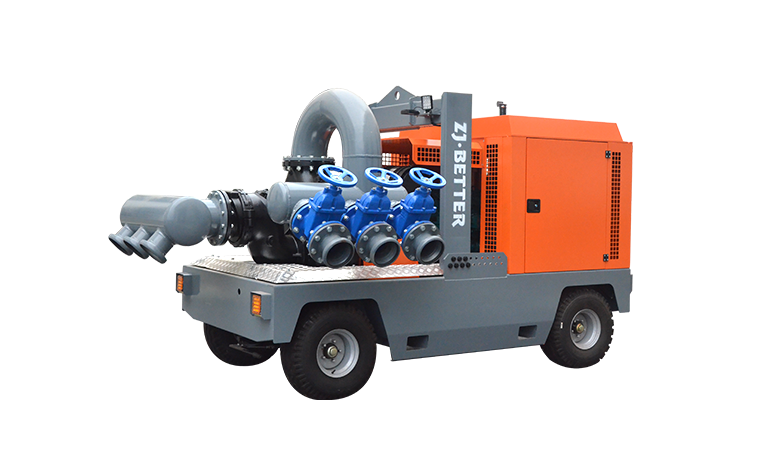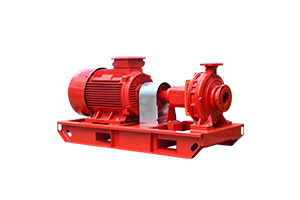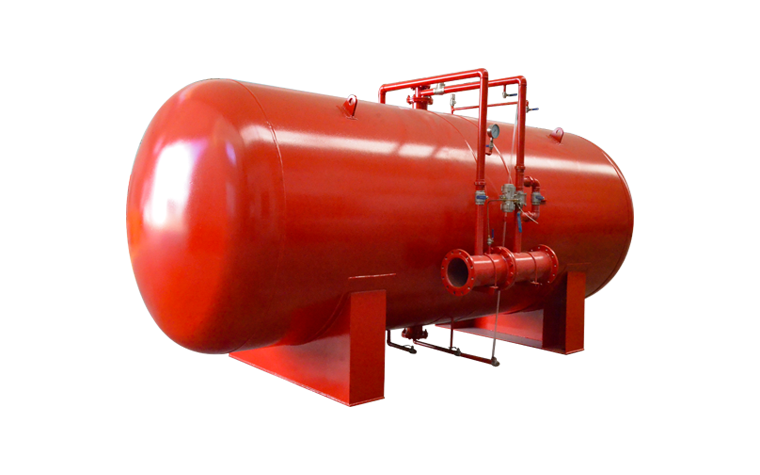Nov 22, 2023
How to choose a vertical fire pump?
Choosing a vertical fire pump involves considering several factors to ensure it meets the specific requirements of the fire protection system. Here are key considerations when selecting a vertical fire pump:
System Requirements:
Understand the specific requirements of the fire protection system, including the required flow rate, pressure, and water supply.
Design Standards and Codes:
Ensure that the chosen pump complies with relevant industry standards and codes, such as NFPA (National Fire Protection Association) standards or local regulations.
Type of Fire Pump:
Vertical turbine pumps are commonly used for fire protection systems. Consider whether a vertical turbine pump is suitable for the application based on factors such as space constraints and the depth of the water source.
Pump Capacity:
Determine the required pump capacity in terms of gallons per minute (GPM) and the total dynamic head (TDH) of the system. TDH includes factors such as elevation changes, friction losses, and pressure requirements.
Material of Construction:
Choose materials that are compatible with the water source and the environment. Common materials include cast iron, bronze, stainless steel, and others. Consider factors such as corrosion resistance and durability.
Pump Size:
Ensure that the physical size of the pump and associated equipment fits the available space in the pump room or designated area.
Efficiency and Reliability:
Look for pumps with high efficiency to minimize energy consumption. Additionally, consider the reliability and maintenance requirements of the pump, as these factors are crucial for a fire protection system.
Manufacturer Reputation:
Choose a pump from a reputable manufacturer with a track record of producing reliable and high-quality fire pumps. Research reviews, certifications, and customer feedback.
Compliance with Local Codes:
Confirm that the chosen pump meets local fire codes and regulations. Different regions may have specific requirements for fire protection systems.
Testing and Listing:
Look for pumps that have been tested and listed by recognized testing laboratories. Listings from organizations such as UL (Underwriters Laboratories) or FM Global can provide assurance of compliance with industry standards.
Ease of Maintenance:
Consider the ease of maintenance and availability of replacement parts. Choose a pump that facilitates routine inspection and maintenance activities.
Budget Considerations:
While it's important not to compromise on safety, consider the budget constraints and ensure that the chosen pump provides value for the investment.
Consultation with Experts:
Seek advice from fire protection engineers or professionals who specialize in designing and installing fire protection systems. They can provide valuable insights into the specific requirements of your application.
Always consult with relevant authorities, adhere to local regulations, and engage with professionals in the field to ensure the proper selection, installation, and maintenance of a vertical fire pump for your specific needs.
 Nov 22, 2023How to choose a vertical fire pump?
Nov 22, 2023How to choose a vertical fire pump? Nov 22, 2023How to solve the problem of fire pump not supplying water?Troubleshooting a fire pump that is not supplying water is crucial for ensuring the effectiveness of fire protection systems. Here are steps you can take to address this issue:
Nov 22, 2023How to solve the problem of fire pump not supplying water?Troubleshooting a fire pump that is not supplying water is crucial for ensuring the effectiveness of fire protection systems. Here are steps you can take to address this issue: Nov 21, 2023How to deal with the noise generated by fire pumps?Dealing with the noise generated by fire pumps is important to ensure a safe and comfortable working environment, especially in locations where the noise may be disruptive or where there are noise regulations in place. Here are some strategies to manage and reduce the noise from fire pumps:
Nov 21, 2023How to deal with the noise generated by fire pumps?Dealing with the noise generated by fire pumps is important to ensure a safe and comfortable working environment, especially in locations where the noise may be disruptive or where there are noise regulations in place. Here are some strategies to manage and reduce the noise from fire pumps: Nov 21, 2023How to start a fire pump?Starting a fire pump involves several steps to ensure that the pump operates effectively in case of an emergency. Here's a general guide, but keep in mind that specific procedures may vary based on the type and model of the fire pump you're using. Always refer to the manufacturer's instructions for your specific pump.
Nov 21, 2023How to start a fire pump?Starting a fire pump involves several steps to ensure that the pump operates effectively in case of an emergency. Here's a general guide, but keep in mind that specific procedures may vary based on the type and model of the fire pump you're using. Always refer to the manufacturer's instructions for your specific pump..jpg) Nov 20, 2023What are the requirements for the inlet flow rate of fire pumps?The inlet flow rate requirements for fire pumps depend on several factors, including the specific application, local building codes, and the standards established by organizations such as the National Fire Protection Association (NFPA) in the United States. The NFPA Standard 20, "Standard for the Installation of Stationary Pumps for Fire Protection," provides guidelines for the installation and operation of fire pumps. However, these recommendations may vary based on regional regulations and standards.
Nov 20, 2023What are the requirements for the inlet flow rate of fire pumps?The inlet flow rate requirements for fire pumps depend on several factors, including the specific application, local building codes, and the standards established by organizations such as the National Fire Protection Association (NFPA) in the United States. The NFPA Standard 20, "Standard for the Installation of Stationary Pumps for Fire Protection," provides guidelines for the installation and operation of fire pumps. However, these recommendations may vary based on regional regulations and standards. Nov 20, 2023Analysis of the main reasons for fire pump shrinkageThe term "fire pump shrinkage" is not commonly used in standard technical language related to fire pumps. However, based on the context, I assume you might be referring to a situation where a fire pump experiences a decrease in performance or efficiency over time. If this is the case, several factors can contribute to a decline in the effectiveness of a fire pump:
Nov 20, 2023Analysis of the main reasons for fire pump shrinkageThe term "fire pump shrinkage" is not commonly used in standard technical language related to fire pumps. However, based on the context, I assume you might be referring to a situation where a fire pump experiences a decrease in performance or efficiency over time. If this is the case, several factors can contribute to a decline in the effectiveness of a fire pump:
.png)
.png)

.png)


